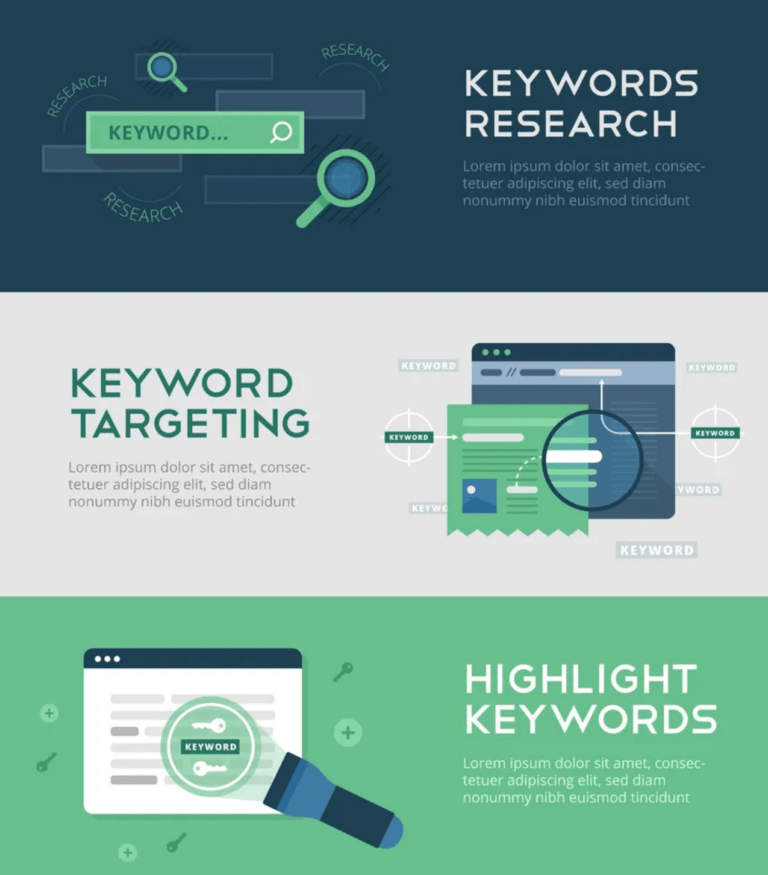
How Do I Handle Keywords with Multiple Intents?
Have you ever wondered why some keywords bring a mixed bag of search results? Perhaps you’ve used a search term only to find results that seem to cover a variety of topics, making it hard to find exactly what you need. This is a classic case of handling keywords with multiple intents. This comprehensive guide aims to answer common questions about handling these kinds of keywords in an engaging and friendly manner.
“Keywords are the clues that search engines use to decipher user intent. The challenge is addressing multiple intents behind a single keyword.”
1. What Are Keywords with Multiple Intents?
When we talk about keywords with multiple intents, we’re referring to those search terms that could mean different things to different people. For example, consider the keyword “Apple.” It could refer to the fruit, the tech company, or even a flavor in a certain recipe.
Defining Search Intent
Before diving deeper, let’s break down the concept of search intent:
– **Informational Intent:** Users are looking for information.
– **Navigational Intent:** Users want to find a specific website or page.
– **Transactional Intent:** Users are looking to make a purchase.
Example Breakdown
Using “Apple” as an example:
– **Informational:** “Health benefits of apples.”
– **Navigational:** “Apple official website.”
– **Transactional:** “Buy Apple iPhone 13.”
2. Why Is It Important to Understand Keyword Intent?
Knowing the intent behind a keyword can significantly impact your content strategy, SEO efforts, and overall user experience. Misunderstanding keyword intent can lead to irrelevant traffic and higher bounce rates.
Benefits
- **Increases Conversion Rates:** Matching the user’s intent keeps them on your page longer, increasing the chances of conversion.
- **Improves Engagement:** When content directly addresses a user’s intent, engagement metrics such as time on page, click-through rate, and interaction tend to improve.
- **Reduces Bounce Rate:** By meeting user expectations, you reduce frustration and the likelihood of them leaving your site immediately.
3. How Do I Identify Keywords with Multiple Intents?
Identifying such keywords can be a bit tricky but is crucial for effective SEO. Here’s a step-by-step approach that can help:
Step-by-Step Approach
- **Keyword Research:** Start with comprehensive keyword research. Tools like Google Keyword Planner, Ahrefs, and SEMrush can help identify potential keywords.
- **SERP Analysis:** Examine the Search Engine Results Pages (SERPs) for your target keywords. Look at the types of pages that are ranking to understand what Google deems as relevant.
- **User Queries:** Assess the related searches and “People Also Ask” sections to see different contexts in which the keyword is used.
Practical Example
Let’s take the keyword “bass”:
– **Fish:** Articles about freshwater bass, fishing techniques.
– **Instrument:** Reviews of bass guitars, how-to-play guides.
4. What Strategies Can I Use to Handle Keywords with Multiple Intents?
Once you’ve identified keywords with multiple intents, the next step is to formulate a strategy to address these effectively. Here are some tactics:
Segment Content
Create separate pieces of content targeting each identified intent. This ensures each group of users finds exactly what they’re looking for.
Use Clear Titles and Meta Descriptions
Make sure your titles and meta descriptions clearly indicate the content’s focus. This can help users quickly determine if your page matches their intent.
Create a Sectioned, Comprehensive Guide
If it makes sense, create a comprehensive guide that covers all possible intents within one page, clearly sectioned for ease of navigation.
Employ Structured Data
Using Schema Markup to add structured data can help search engines understand the different sections and intents within your content.
Utilize Internal Linking
Guide users to the relevant sections or other related pages through internal linking.
5. How Does User Behavior Analytics Help in Understanding Intent?
User behavior analytics plays a critical role in understanding how users interact with your content and whether their needs are being met.
Tools to Use
– **Google Analytics:** Monitor behavior flow and user journeys.
– **Hotjar:** Use heatmaps and session recordings to understand user interaction.
– **Crazy Egg:** Track clicks, scroll depth, and other engagement metrics.
Metrics to Monitor
– **Time on Page:** Longer time indicates engagement, suggesting content matches intent.
– **Bounce Rate:** A high bounce rate may indicate that your content doesn’t match user intent.
– **Conversion Rate:** If the content aligns with transactional intent, you should see higher conversions.
6. How Do Search Engines Interpret Multiple Intents?
Search engines like Google are continually evolving to better understand user intent. They use complex algorithms and machine learning to interpret multiple intents and provide the most relevant results.
Role of AI and Machine Learning
Artificial Intelligence (AI) and machine learning are deployed to analyze vast amounts of data, understanding context, semantics, and even user behavior.
Google’s BERT Update
Google’s BERT (Bidirectional Encoder Representations from Transformers) update focuses on better understanding the context of words in search queries, improving how multiple intents are processed.
Example Result Diversification
For a keyword like “jaguar,” you’ll see a mix of search results including information about the animal, car manufacturer, and related images. Google aims to cover various intents in a single SERP.
7. Are There Any Tools to Help Understand and Optimize for Keyword Intent?
Several tools can help you better understand and optimize for keyword intent:
Keyword Research Tools
- **Google Keyword Planner:** Offers insights into search volume and related queries.
- **Ahrefs:** Provides in-depth analysis of keyword difficulty and related keywords.
- **SEMrush:** Helps in identifying search trends and intent categorization.
Content Optimization Tools
- **ClearScope:** Analyzes top-ranking pages to suggest keyword usage and content structure.
- **Yoast SEO:** Assists in optimizing content for target keywords and readability.
8. How Can I Continuously Improve My Strategy for Keywords with Multiple Intents?
Success with keyword intent requires ongoing efforts and adjustments. Here are actionable steps:
Regularly Update Content
Keep your content fresh and relevant. Periodically review and update to ensure it continues to meet user needs.
Conduct A/B Testing
Experiment with different titles, meta descriptions, and landing pages to see what works best for different intents.
Seek User Feedback
Ask for feedback through surveys or user interviews to gain insights into whether your content meets their needs.
Monitor SEO Trends
Stay updated with the latest SEO guidelines and algorithm updates to adjust your strategy accordingly.
9. How Can I Use Social Media to Gain Insights into Keyword Intent?
Social media platforms can serve as a gold mine for understanding user intent and behavior.
Engage with Your Audience
Actively participate in discussions and respond to queries to understand what your audience is searching for and why.
Analyze Trending Topics
Monitor trending topics and hashtags related to your industry to gauge what is currently capturing the audience’s interest.
Leverage Social Listening Tools
- **Brandwatch:** Tracks mentions and sentiment analysis regarding your brand and industry.
- **Hootsuite Insights:** Provides an overview of social media conversations related to your keywords.
10. What Are Common Mistakes to Avoid When Handling Keywords with Multiple Intents?
While working with keywords with multiple intents, certain pitfalls should be avoided:
Ignoring SERP Analysis
Skipping SERP analysis can lead to misinterpreting user intent.
Overloading Content
Cramming multiple intents into one piece of content without clear segmentation can confuse users.
Underestimating User Behavior
Failing to monitor user interaction and behavior metrics can result in missed opportunities for optimization.
Lack of Regular Updates
Not updating content regularly can lead to outdated information that no longer serves the user’s intent.
Conclusion
Handling keywords with multiple intents requires a strategic approach, regular monitoring, and continuous optimization. By understanding and aligning with user intent, you can improve your content’s relevance, enhance user experience, and ultimately achieve better SEO results.
Remember, the key is to be proactive and agile in adapting your strategies to meet the evolving needs of your audience. Armed with the right tools and insights, you’ll be well-equipped to manage the challenges and opportunities presented by keywords with multiple intents.
